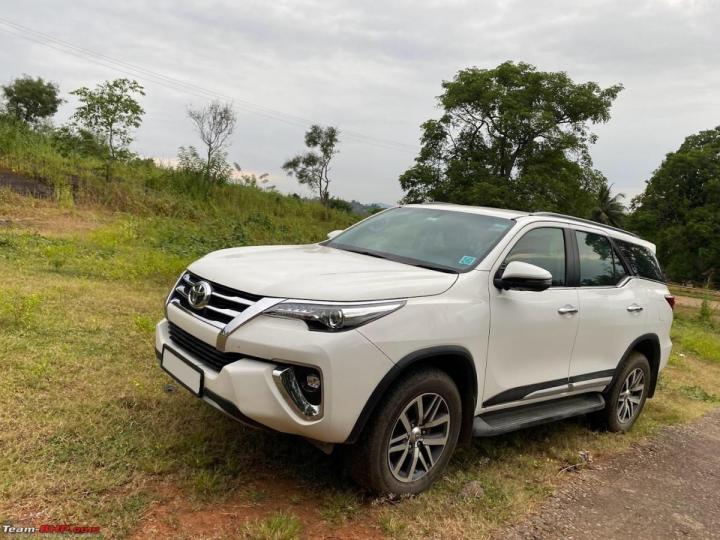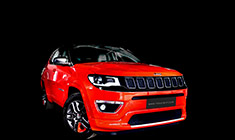News
Reducing body roll on my 2017 Fortuner: Does a rear sway bar help?
On roads with smooth, even pavement, larger sway bars are generally a boon; on uneven, undulating surfaces normally will create a rougher ride.
BHPian Ansuman recently shared this with other enthusiasts.
Has anyone tried any means to reduce the body roll of the Toyota Fortuner? I have a 2017 model Toyota Fortuner. I heard about using the rear sway bar. Is there any feedback or advice about using the sway bar?
Here's what GTO had to say on the matter:
It's hard to argue with physics & the way this tall SUV is built.
- Because it's a popular SUV, there are tons of aftermarket suspension options (Tein, Ironman, ARB & more). Take some time out and search deeply through Team-BHP. There are posts on all of these options. But be sure to thoroughly test-drive the suspension you're planning to buy first. I recently got an aftermarket AVO suspension for my body-on-frame SUV (Thar) and it has completely transformed the ride quality from "bumpy & annoying" to "compliant & liveable".
- Personally, if I owned a Fortuner, I'd focus more on improving the ride comfort than reducing body roll. But apparently, there are some suspensions that offer both for the Fortuner.
Some threads to get you started. Research, research, research. Be sure to come back & update this thread after your installation, so it helps others.
- Fortuner Ride Comfort
- Tein for the Fortuner
- My Fortuner with an after-market suspension
- Ironman / ARB for Fortuner
- Reduced Scorpio's body roll
Will add further that, every time you think your car is misbehaving, drive another example of the same model to confirm whether the problem is specific to your car or the model itself.
Here's what BHPian Kosfactor had to say on the matter:
Before you go into the aftermarket scene, just have a once over with an experienced technician in a Toyota dealership - give them a test drive of the vehicle and check if it's really how the vehicle is supposed to behave or if something is worn out underneath.
Ideally, everything should feel tight and the vehicle should behave predictably around the bends, from the factory there are anti-roll bars \ sway bars in the suspension, messing around with it will certainly change the way the vehicle behaves - can be for better or worse but it the negative aspects of suspension mods will often come to light when it's too late.
Always remember Toyota knows how to make a comfortable body-on-frame vehicle, if Fortuner is different then it is intentional.
Here's what BHPian CEF_Beasts had to say on the matter:
In Indonesia and Thailand, a rear stabiliser bar/ sway bar is a very common aftermarket addition to the Fortuner. You can try that out.
Here's what BHPian ringoism had to say on the matter:
I always understood the term "body roll" to basically mean the angle at which the body settles into a turn of whichever radius at a given speed.
I think some people use the term more often to describe the sort of side-to-side rocking and sway that vehicle like the Scorpio is famous for.
But short of a very high-tech active suspension you can't have your cake and eat it too; And what's interesting is that corrections to these two different dynamics can be mutually exclusive - meaning that certain things are done to improve body roll (first definition) actually increase the swaying/rocking, and vice-versa.
Personally, I think the general move towards crossovers from SUVs (the same happened in the U.S. some years ago) comes down partly to the aforementioned physics - the fact that COG vehicles will always involve compromises in the ride&handling department.
Mechanics in H.P. call the sway bar a "jumping rod" which probably indicates that they have a limited grasp of what it does and why. They are not alone.
Won't get into it too deeply, but the basic function is to reduce roll by attempting to some degree to keep right and left side wheels in the same relative location to the body. Bigger the bar, the greater the effect. Some 4x4s (Rubicon) have automated sway bar disconnects for offroad use, where you want more articulation and a sway bar would prevent it.
As for practical effects will just say that:
- A bigger sway (a.k.a. anti-roll) bar will decrease roll but actually noticeably INCREASE the side-to-side swaying on uneven surfaces.
- A smaller sway bar will allow more roll-in turns but smooths out the rocking motion on uneven surfaces.
So it's necessary to be clear about what you're aiming for, in relation to your own specific context/driving habits.
On roads with smooth, even pavement, larger sway bars are generally a boon; on uneven, undulating surfaces normally will create a rougher ride.
So-called "heavy duty" suspensions generally use larger ones, for more control in turns with heavy loads and at higher speeds. Which can make the perception of ride quality worse.
That said there are many approaches - roll can be reduced with OE sway bars by increasing spring rates - but that will increase the sort of "jiggliness" (now there's a proper technical term) on smaller sorts of bumps and surface roughness.
Shock absorber damping rates/curves of course also do play a role.
So it's potentially complex and there are compromises everywhere.
Also worth mentioning is that going larger on the front bar, all other things being equal, increases understeer at the limit - whereas going larger on the back (or adding one where originally absent) increases oversteer - which OEMs tend to frown upon since noobs can't manage oversteer as well. But increase them both by the same margin, and you're balanced again... but rocking it nicely!
All this to say that unless you've got some tech knowledge and time for potentially fooling around till you get the improvements you desire, a properly engineered solution makes sense.
Also important to realize that so much depends on typical road quality encountered by passengers. OEMs try and tune them best they can according to the tastes and habits of the greatest number of customers at average speeds on sort of "average" roads. This is definitely not going to be the best for everyone.
I have no experience with Ironman and other offroad / aftermarket suspensions and am not sure as to the tuning approaches taken, but as others advised it is good to research and if possible test-drive, because those tend to get expensive.
Check out BHPian comments for more insights and information.
- Tags:
- Indian
- Toyota
- Member Content
- Fortuner









.jpg)









